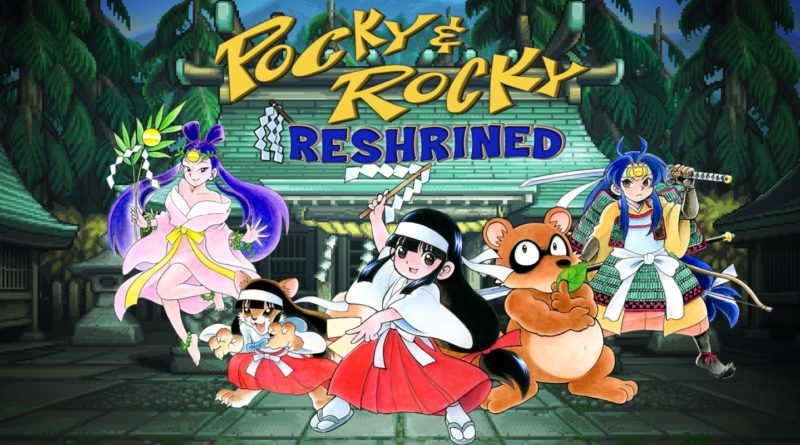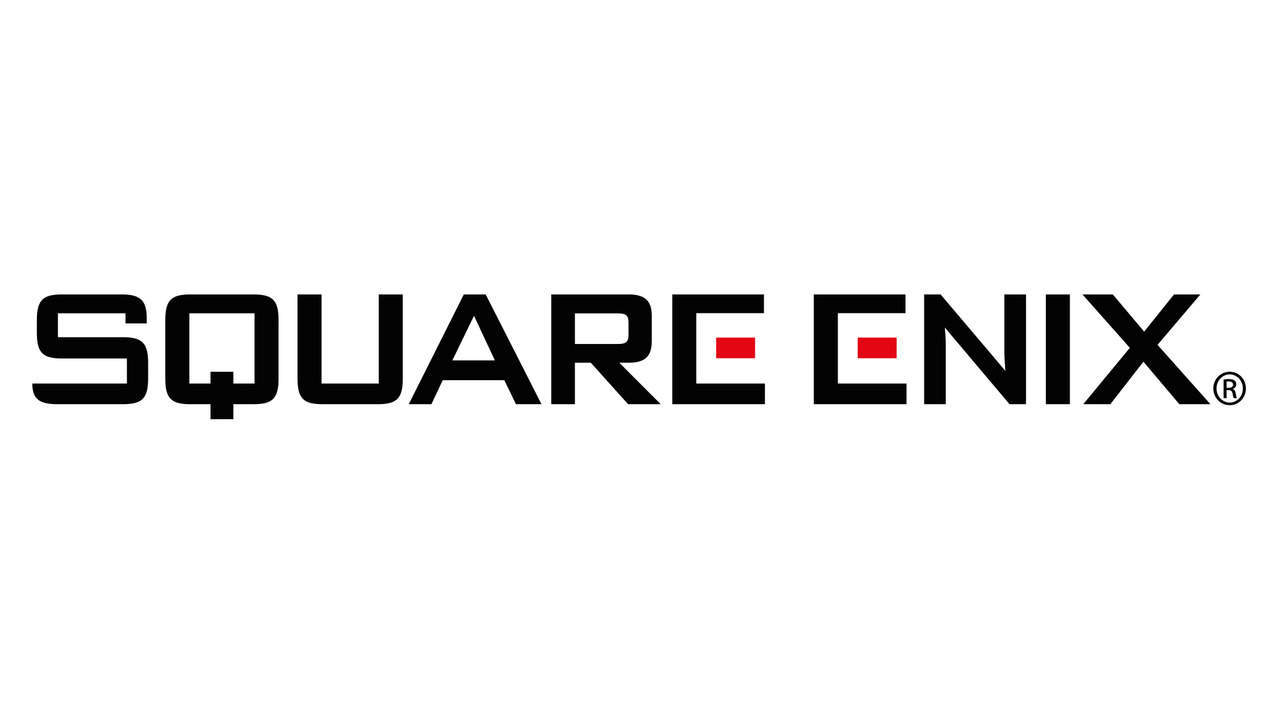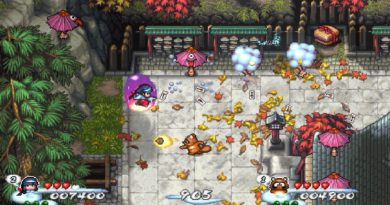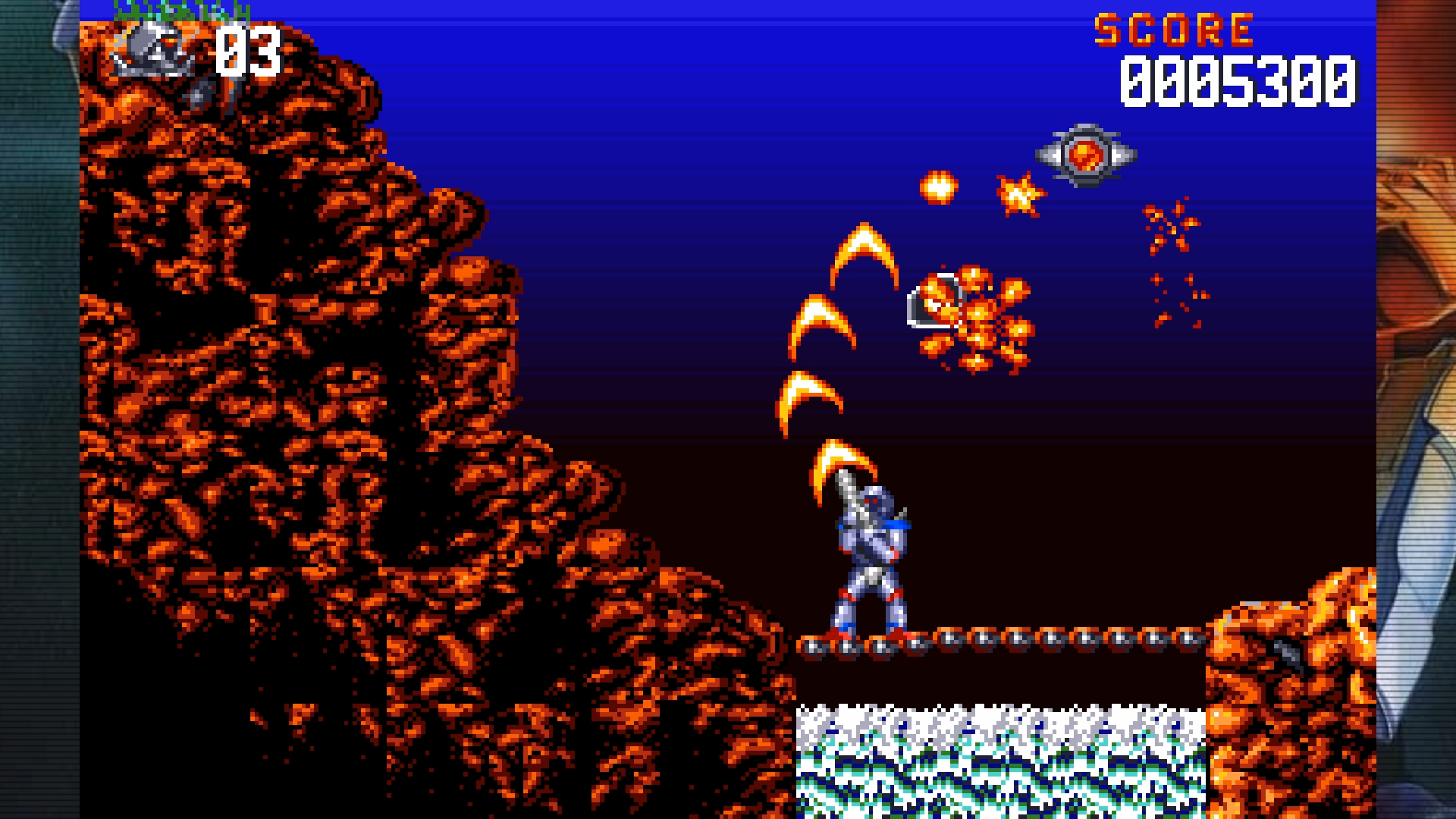Pocky & Rocky Reshrined Review (Switch) – Number Of The Oni by Shrine Maiden
If you’re into shmups, you’ll probably like Pocky and Rocky Reshrined. Closer to a top-down run and gun type game, it has many of the features of a shmup, but you get full control over your characters, 8-direction firing, short and long-range weapons, stages that went in all directions, and high difficulty – the arcades in your living room, but with more freedom. It originally came out in 1992 for the Super Nintendo Entertainment System, SNES in the West, or Super Famicom in Japan, and was successful enough to spawn a few sequels, but has been largely lost to time among the bigger hitters in the subgenre.
Fast forward 30 years and, while many of its contemporaries and predecessors are languishing or forgotten, Pocky and Rocky Reshrined is a full revival. Don’t call it a remaster, because it’s much more than that. Don’t call it a sequel, because it’s based on the original game. Remake is the closest option, but many have taken to calling this a reimagining. There are many enhancements; new areas, new assets, new controls, new characters, redone music and a few quality of life features for a modern audience. It’s close to a brand new game, and a brand new Pocky and Rocky is a good thing.

Not that story matters much in a shmup/run-and-gun type game from this era, but Pocky and Rocky Reshrined has one, which does a fair bit to instil some tension into proceedings and give you more impetus to continue through the difficulty. Pocky is a young shrine maiden (she’s not a famous piece of Japanese confectionery) minding her business when the monsters and Oni of the forest come streaming down through the shrine and into the human world. Rocky, her Tanuki friend, catches up to her to explain what happened, and to join forces to bring them back. Very soon they’re off, discovering a mysterious figure behind the monster’s awakening – the Black Mantle – and it’s up to them to stop his evil plans.
The story won’t do much you aren’t expecting. Pocky gets the powers of the Kami spirits and over the course of seven worlds with a boss or two each, you’ll explore some traditional Japanese settings, and then delve into the underworld on your journey to defeat Black Mantle. It’s fun, but it’s also pretty pedestrian. The final Stage Eight is the big boss, and the game is easily done in about an hour. With the difficulty Pocky and Rocky has, this is more likely to extend to two or three hours for a typical playthrough, and multiple attempts.
Pocky and Rocky is a top-down shooter, with player-controlled scrolling – it won’t continue on without you, and it’s rare you can’t go backwards. This gives you a lot more freedom than most shmups of this era, where you are forced along at a particular pace. You control one of the two leads through the game, earning three other characters for use in free mode as you go. Both characters can use a long-range quickfire weapon, of which there are generally three coloured varieties – straight shot, curved, and spread. Power-ups litter the levels and will change your weapon type if you pick up one of the colour you aren’t currently using. If you pick the same colour you will add power or increase bullets for your weapon, so there is an element of strategy in being selective over your pick-ups. The worst thing is to have third-tier power on a weapon, and then pick up a new colour, only to be reset to first-tier power levels.
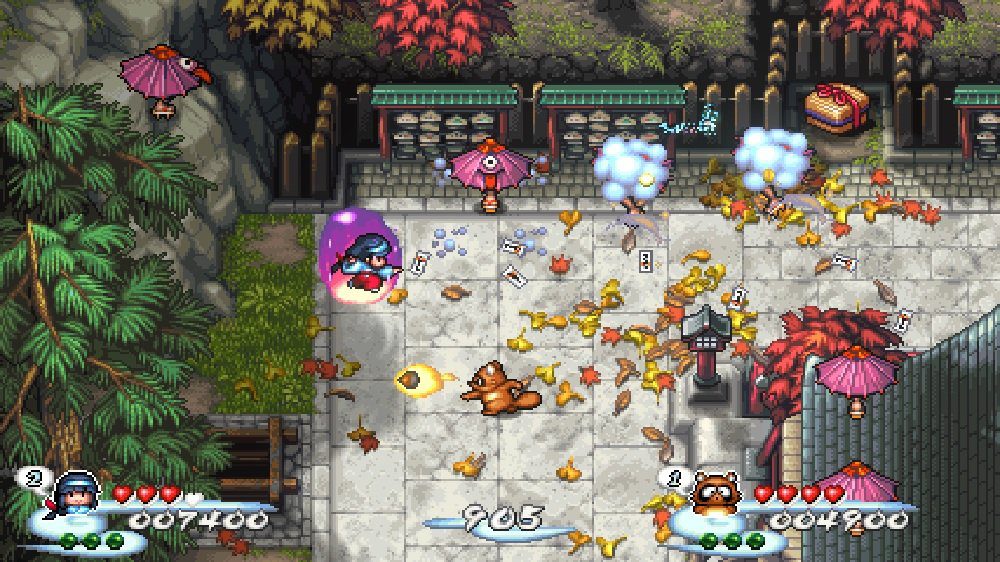
There is also a melee weapon that can slash quickly just in front of Pocky – this is great for enemies that get too close, sure, but it’s also able to deflect most types of fire. Not all, so do be careful, but most. It’s actually more useful for this purpose anyway, as if you are using melee, the enemy is likely close enough to hurt you anyway even if you hit them. The melee doesn’t generally deflect enemies themselves, so they can kind of absorb it and keep coming at you. The deflection of projectiles is great fun, and it’s often the best way of taking down many of your opponents. There is often too much to think about on screen, but this adds a welcome layer to the gameplay that I enjoyed.
To round off your normal move set, regardless of character, you get the shmup-standard bomb move and a diving dodge move. The bombs are three per life in general, but are very powerful and can clear whole screens, or half a minor boss’ health. They are worth holding back until you need them, but, as in many shmups, they add a good get-out-of-jail-free option should you get overwhelmed. The dive move is not so useful actually – it’s really not a dodge, more a headlong dive in the direction you specify, with a little standing-up animation cooldown built-in. Good with some forethought against a boss you are familiar with, but not that useful in an intense firefight – you are more than likely to just dive into more fire, get hit while standing up again, or dive off the side of some precarious ledge. To be used very sparingly.

Along the way, allies will gift you temporary bonus powers for particular levels – Uzume the Kami goddess gives you a useful auto-melee during her level, and a thunder weasel called Izaguchi gives you, well, thunder weasel powers. Each is a nice change up to the formula, but really come into their own in free mode – they also have three of their own weapons for each colour power up.
My main issue with gameplay was not levels, enemies or weapons – it was controls – and more specifically the retro controls that have been retained in this release. Eight directions can often mean you’re firing into diagonal non-space hitting nothing, but the issue for me really came from having to move and aim with the same directional stick and fire with a button. Control-wise, this genre was perfected with more modern twin-stick controls, so that you could aim and move in different directions simultaneously. While it’s by no means a deal-breaker, it can be frustrating after so long with more modern controls to be forced to backtrack without firing when faced with strong bullet-sponge enemies – you need to walk away from them and fire away from them and then realign and make your attack. In a modern game, you could backtrack while still facing the enemy and fire all at once.

Pocky and Rocky is relatively unique in the run and gun genre for featuring traditional Japanese visuals; lush temples and bamboo forests, a burning Japanese town; enemies are recognisable Oni spirits if you’re read up on those types of stories and sometimes modern comics – things such as Kappa, long-necked women, ghosts and ogres and Tengu. Pocky is a Shinto shrine maiden and Rocky her Tanuki companion – it gives Reshrined and the series in general its own recognisable look, that differentiated it in the early nineties and does again now.
The Reshrined edition recreates very faithfully the 16bit era visuals, high-end pixel artwork and movement. Character models and locations have in many cases been entirely recreated from scratch, but if you know the original, you will recognise the stages without any trouble. It was already a lush-looking retro title, but the Reshrined additions makes it notably gorgeous in many places. The first time you see each of the stages is certainly special if you like your pixel art.
Along with the lovely visuals, the 16bit music has been redone but kept its vibrant chiptune sound – the tunes add a great vibe to every level and never got old. That said they also rarely stuck in my head for long either, so somewhere in the middle ground in terms of memorability.

Pocky and Rocky Reshrined retains the high difficulty of the original, and while in no way are we saying its Cuphead level, it’s certainly not for the faint-hearted. This Reshrined edition takes the edge off somewhat from its retro original – Checkpoints appear usually just before big bosses (or the ‘part two’ of a stage), giving you a chance to take it on the second time with your full three lives, so if it beat you the first time 30 years ago, this edition will actively help you to finish.
Free mode is earned after completing the story once, but it’s not as free as you might expect – it’s not any level at any time, it’s more any character and then start the story mode again. Easy mode will take you a few hours to earn (by gaining 3000 coins) but to be honest, by the time you earn it, you are likely to have beaten the main game anyway. If you are really struggling then you can keep the coins you get from failed attempts, but because of the forgiving nature of the checkpoints, I really think most will finish the game before earning easy mode. That kind of defeats the purpose, don’t you think?
Speaking of the coins you earn, you’ll need 10,000 of the little things to unlock what used to be my favourite way to play this – co-op. While it makes little sense to me to gate this mode behind such a grind for coins, it does give you something to earn. But for those looking to play the game with siblings or friends, you’ll need to play many hours of it on your own first. At the time of writing, this reviewer did not have the time or patience to earn these coins, nor the friends to play with, in order to give a valid assessment of the multiplayer for you.
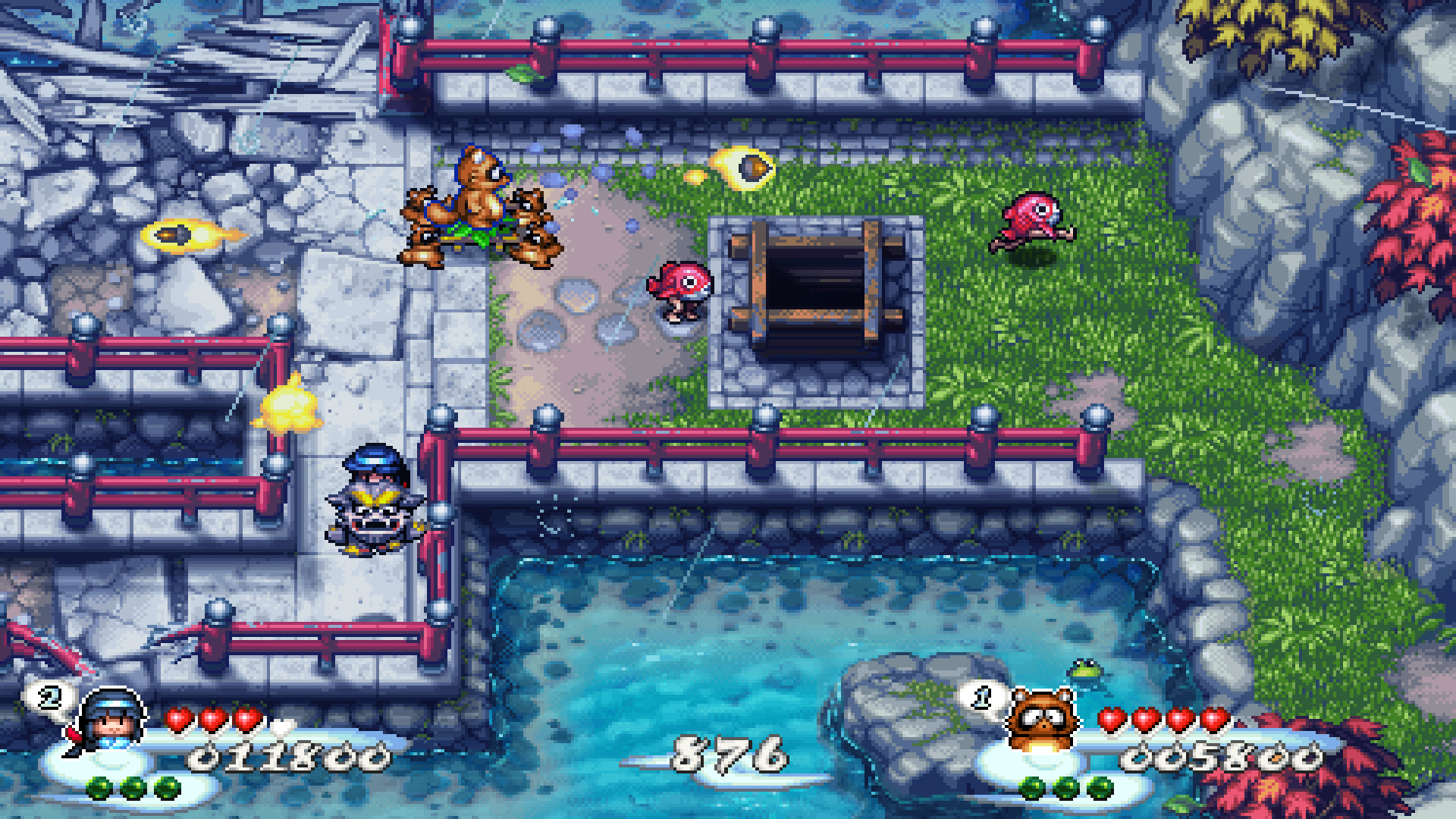
Pocky and Rocky is a lot of short-lived fun. If you get hooked you could add a few hours on the end of my earlier estimate, trying for eye-watering leaderboard rankings available online for every level. For most of us, it’s a difficult ask for only a few hour’s play and a shame that some of the fan-favourite features like co-op are gated for no logical reason. The package is gorgeous, lovingly recreated and reimagined, and what’s there is great. A slick and fun run and gun shooter with beautiful pixel art, it’s maligned only by some of its retained retro sensibilities.
Pocky and Rocky Reshrined is a gorgeous run-and-gun shooter, lovingly and faithfully reimagined. It’s just as much fun as it was back in the nineties, but little in the way of extra content and decidedly old-school controls hold it back from greatness.

Pocky and Rocky Reshrined is available now on Nintendo Switch (review platform) and PlayStation 4.
Developer: Natsume
Publisher: Physical: ININ Games / Digital: Natsume
Disclaimer: In order to complete this review, we were provided with a promotional copy of the game. For our full review policy, please go here.
If you enjoyed this article or any more of our content, please consider our Patreon.
Make sure to follow Finger Guns on our social channels –Twitter, Facebook, Twitch, Spotify or Apple Podcasts – to keep up to date on our news, reviews and features.
